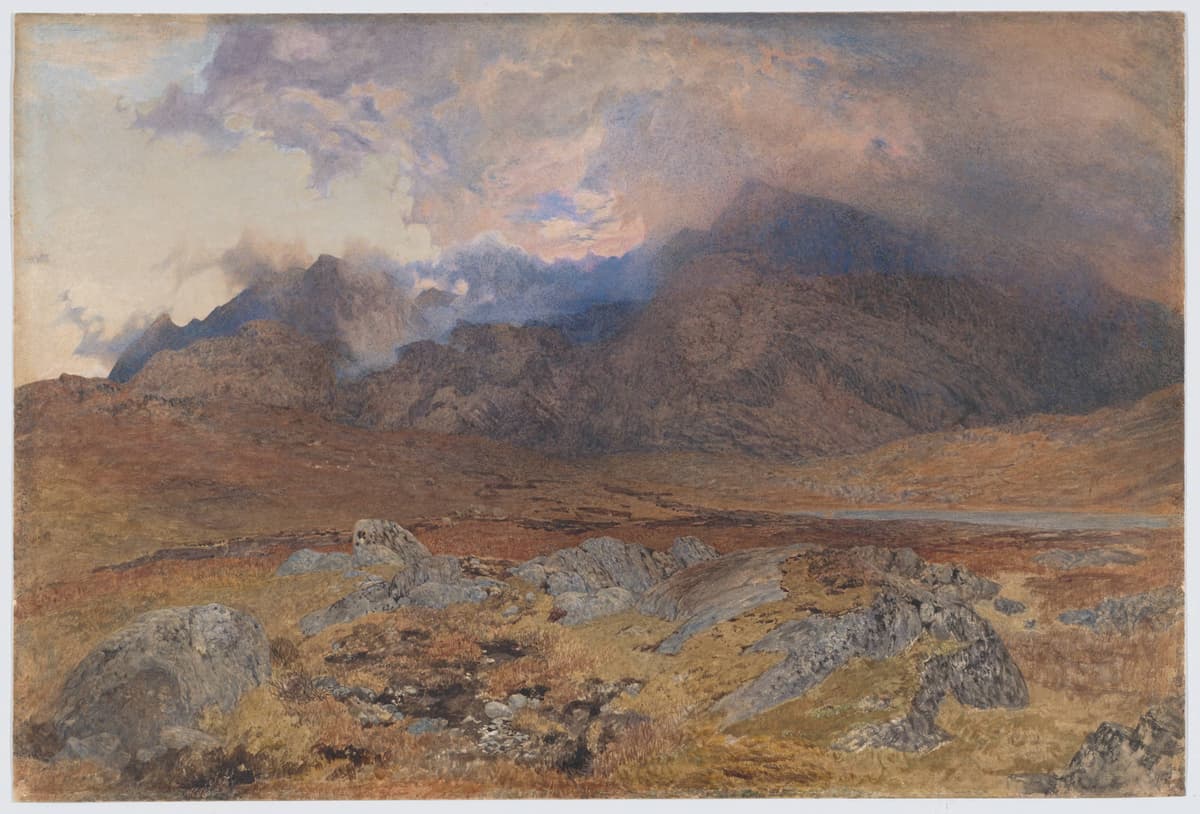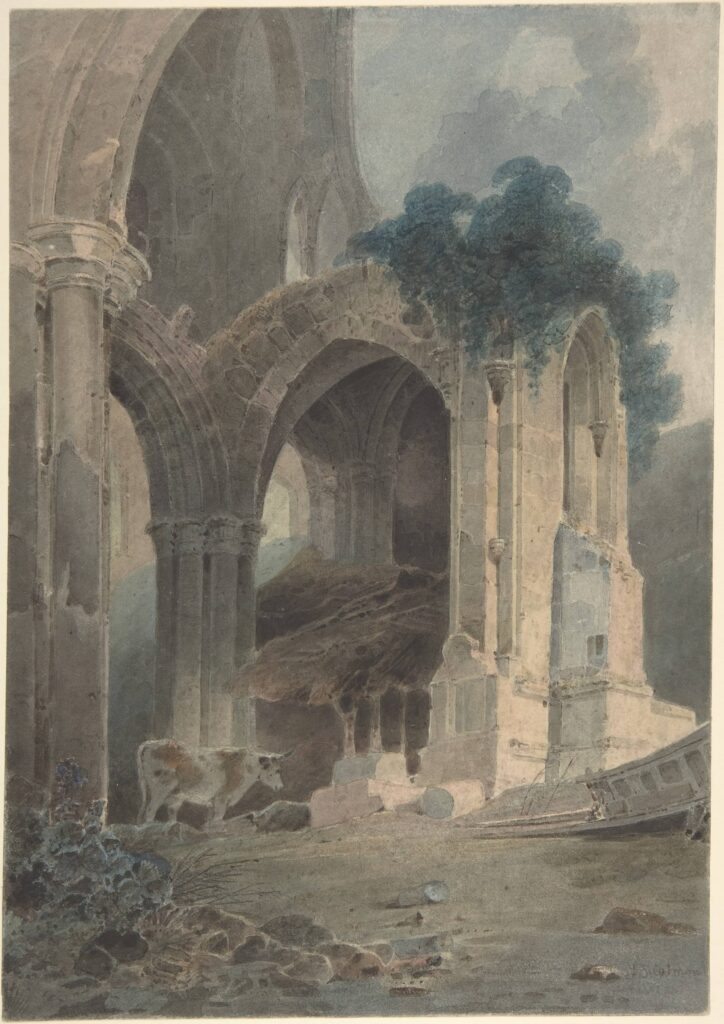‘British Vision’ at the Met Traces the Origins of the Picturesque Movement in Art — and a Nation in Flux
The works on view reflect and grapple with a series of seismic changes Britain underwent during the tumultuous years between 1700 and 1900.

‘British Vision, 1700–1900: Selections from the Department of Drawings and Prints’
Metropolitan Museum of Art, 1000 5th Ave, New York, NY
Through March 5, 2024
While you wait in the virtual queue for “Manet/Degas,” it’s worth a stop by “British Vision: 1700-1900,” a new rotation of works on paper from the Met’s collection. The Department of Drawings and Prints has gathered over seventy works and objects — including an original Ackermann & Company watercolor paint box from the nineteenth century — by more than fifty British artists.
These works range from finished paintings to the most offhand sketches, and comprise mostly landscapes, with a few portraits and botanical studies peppered in. One might call it an indicative cross-section of two key centuries in British art history or a grab-bag of works from the collections: broadly speaking, the works on view in “British Vision” reflect and grapple with a series of seismic changes Britain underwent during these tumultuous years.
Perhaps the most obvious change manifested in “British Vision” is the new interest in rendering the landscapes of the British Isles. In 1762, Horace Walpole bemoaned in his “Anecdotes of Painting in England” that “in a country so profusely beautiful with the amenities of nature, it is extraordinary that we have produced so few good painters of landscape.”
He added that “as our poets warm their imaginations with sunny hills, or sigh after grottos and cooling breezes, our painters draw rocks and precipices and castellated mountains, because Virgil gasped for breath at Naples, and Salvator wandered amidst the Alps and Apennines.”
Over the next few decades, English painters readily heeded the call. Starting in the early nineteenth century, landscape painting proliferated across the British Isles: rapid technological advances fueled the creative endeavors of professional and amateur artists alike as they sought to depict scenery that was wholly and characteristically British.

This newfound interest in the rivers and peaks of Great Britain was born partly out of necessity. The French Revolution, followed by the Napoleonic Wars, discouraged sketching trips to the hills and shores of Classical antiquity. As British painters looked inward, artists and writers sought to define an aesthetic in line with a burgeoning British nationalism. Out of this grew the “cult of the picturesque,” a craze in British art, literature, and landscaping during the late eighteenth and early nineteenth centuries.
One of the artists on view, William Gilpin, was a forefather of the picturesque movement — ironically, his conception of this characteristically British aesthetic was based in large part on the landscapes of French painter Claude Lorrain. Gilpin advocated adding to the landscape from the viewers artistic imagination to achieve a picturesque scene.
In Gilpin’s pen and ink composition “Landscape with hills and a lake” we can easily believe that it took the marriage of nature and artifice to produce the silhouetted trees clinging improbably to the cliff side, while in his illustration accompanying “Three Essays: On Picturesque Beauty; On Picturesque Travel; and On Sketching Landscape,” the exaggerated shadows of the foreground contrast with the light of the background to give the two small figures a pleasing, stage-like entrance from around the bend in the road.
As the picturesque mania grew in Britain (Jane Austen and Tom Stoppard have written definitive and delightful literary sendups of the picturesque) it began to over-ripen into artistic fixations with ruined castles, crumbling crags, decaying abbeys, and blasted trees. Francis Towne’s “Berry Pomeroy Castle in Devon” and John Sell Cotman’s “The east end of Rievaulx Abbey, Yorkshire” offer two wonderful glimpses foreshadowing where the picturesque movement was going.
In its visions of Albion, the exhibition is at its best. “Early morning near Loch Katrine in the Trossachs, Scotland” by John Glover captures the morning sunlight on a pillowy landscape in a composition that recalls Claude Lorrain’s golden light, rediscovered in the Scottish Highlands through a more limpid, delicate medium.
Another master of mist, Alfred William Hunt, explores the dramatic potential of watercolor in the Welsh skies in “Snowdon, after an April Hailstorm,” in which he lightly distresses the paper where the clouds and mountain meet, animating the surface and juxtaposing the smudged peaks with the precisely rendered rocks and grasses below.
And yet, “British Vision” doesn’t confine itself to the landscapes of the British Isles or the development and dissemination of the picturesque (one could wish that the breadth of vision had also extended to including a few female artists in the show). An abiding interest exotic landscapes, architectures and peoples is evident, particularly in Edward Lear’s hasty sketch “Peasant women from Ragusa,” David Roberts’ “Tétouan from the Terrace of Cohen’s House, Morocco,” Sir David Wilkie’s “Abram Incab Messir” and John Frederick Lewis’ “Iksander Bey and His Servant.”
The era of the Grand Tour in Europe was well underway by the nineteenth century, but Thomas Cook’s tours of the Middle East and part of Africa in the second half of the nineteenth century ushered in a new period of imperial tourism, enabled by the steam power that was the banner invention of the Industrial age. And speaking of industry, only two works on view deal with the dirty business of coal mining, transportation, and burning — a subject to which many British artists clearly had a strong aversion. For all that, there is a gloomy romance to John Baptist Malchair’s “Foundry at Canon, Herefordshire,” as well as — dare I say — a touch of the picturesque.
A handful of pleasant portraits and painstaking botanical studies make up the rest of the show. As a whole, it is hard to see how these works fit together, which may be the point: one comes away with the sense of having glimpsed a nation grasping for an identity, and an empire in flux.

